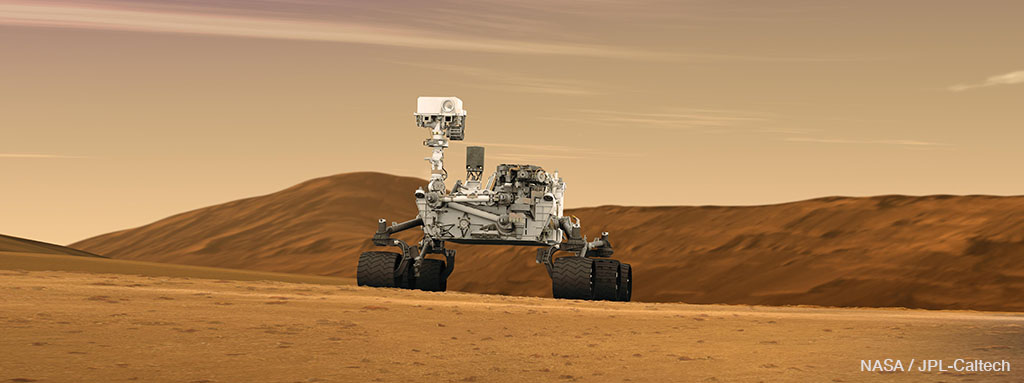Mars is the only planet known to be inhabited exclusively by robots. This may sound like a joke, but strictly speaking, it is completely true. This fact is also very relevant to prove that there is water on Mars.
Confirming the existence of water in a liquid state on other celestial bodies is very important, because it demonstrates that the necessary conditions for life do exist (however necessary they may not be enough) for generating or establishing life as we know it. This is the focus of astrobiology, and for this reason Mars is populated by robots, all of which are programmed to take samples and analyse them in search for signs of life or signs of the existence of conditions for life, among other things.
The odds are quite high against finding any life on Mars, because of the harsh conditions existing on the planet’s surface.
These inhabitants of Mars have confirmed, based on the geomorphological structures found, that in the past there was definitely liquid water flowing across its surface. Attempts to find it have been in vain because, among other things, the thin Martian atmosphere does not allow exposed liquid water to remain on the surface: either it evaporates immediately, if it is on the side illuminated by the sun, or freezes immediately, if it is in the shadowed area. In short, the inhabitants of Mars have been able to detect the presence of trace amounts of water in gaseous and solid forms, but the liquid phase has been extremely elusive… until now.
It has just been demonstrated that our red neighbour does have liquid water in a persistent form. The finding was made with the MARSIS radar (Most Advanced Radar for Surface and Ionosphere Sounding instrument), which was specifically designed and operated to enable this discovery from the Mars Orbiter of the European Space Agency (ESA).
MARSIS works by transmitting low frequency electromagnetic pulses. The transmitted waves interact with the elements on the surface and below it, and the reflected waves are captured and used to generate a model showing the geological composition of the planet.
As the water molecule in liquid phase reflects these waves more than any other component of the Martian subsoil, and due to the similarity of the readings obtained with those obtained from glaciers, we have finally been able to see that effectively liquid water does exist at the bottom of this lake.
The liquid water detected consists of a mass that is some 20 km in diameter located in the south pole of the planet. The part in aqueous phase lies under a 1 km thick dense mantle of dust, minerals and ice of varied composition. The depth of this underground lake is still not known with exactitude, but it is at least a metre deep. It is estimated that its temperature is between -10 and -30 °C, but it remains in a liquid state due to a high concentration of dissolved magnesium salts.
It is likely that there is more water in liquid state to be detected, but this lake is big enough to allow identification from the Martian orbit.
The discovery is particularly important for several reasons. On the one hand, it indicates that there are environments on Mars that provide sufficient conditions for life. Furthermore, it gives us an idea of where we have to keep looking. In the case of Mars, it is also important to locate this precious molecule in order to use it as a supply source for future human settlements.
However, the odds are quite high against finding any life on Mars, because of the harsh conditions existing on the planet’s surface, which suggest that even though we have found water, it is almost impossible that life has been generated, much less maintained until now.
In any case, to be able to say for certain that it is water that has been found, further repeated studies are required. That’s how science works… nothing is certain until it is solidly confirmed.
A new stage of research will be initiated now to gather more samples. It is expected that the number of missions to our red neighbour will increase with new exploration teams based on robots to extract those samples. And that means… that in the near future we can also expect that the robotic population of Mars will increase.



